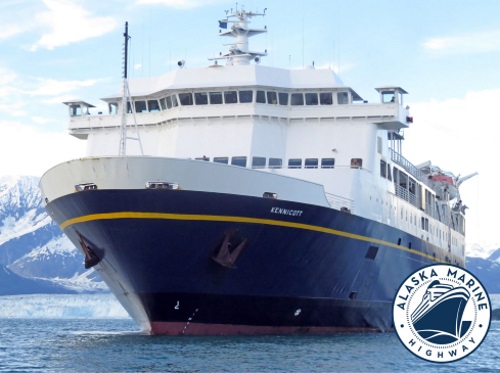Alaska Department of Transportation & Public Facilities and the Southeast Conference plan to collaborate on a low emission ferry research project.
[Above photo by the Alaska DOT&PF]
Alternative fuel powered, low emission, and electric ferries could be a game-changer for Alaska’s Marine Highway System, the agency said, as it starts replacing aging ferry vessels in upcoming years.
Fuel-efficient ferries could increase the range and capacity of the fleet, potentially increasing service to communities and reducing AMHS operating costs, noted Alaska DOT&PF Commissioner Ryan Anderson, in a statement.
“Revitalizing the Alaska Marine Highway System is so important to us,” he said. “Pushing forward to see if alternative fuels, low emissions, or electric ferries, could make our vessels more efficient, could potentially allow us to add service to our coastal communities.”
AMHS operates over more marine miles than any other ferry system in the United States, serving 35 communities with 10 ferries spread out over 3,500 marine miles.
The Southeast Conference will support this research project, which will include a detailed examination of the costs, benefits, and overall technical and financial feasibility of low-emission ferry operations within the AMHS service area.
Funding for the research comes from the new $500 million Electric/Low-Emission Ferry pilot program – established by the $1.2 trillion Infrastructure Investment and Jobs Act, enacted in November 2021 – that seeks to spur the transition of ferry propulsion systems to low- or zero-emission technologies.
“Southeast Conference was formed in 1958 to work with the State of Alaska toward the formation of the Alaska Marine Highway System,” noted Robert Venables, the group’s executive director.
“The success of AMHS is still our passion and priority, and we are excited to continue our partnership with the State to pursue implementation of both the Reshaping Committee recommendations and the opportunities that have emerged in the new federal funding programs,” he added. “This pilot program is well-timed given Alaska’s need to plan for new vessels to replace the Alaska Marine Highway’s aging fleet.”

